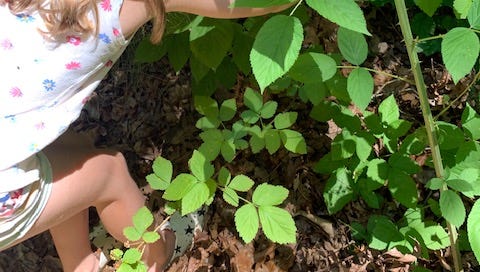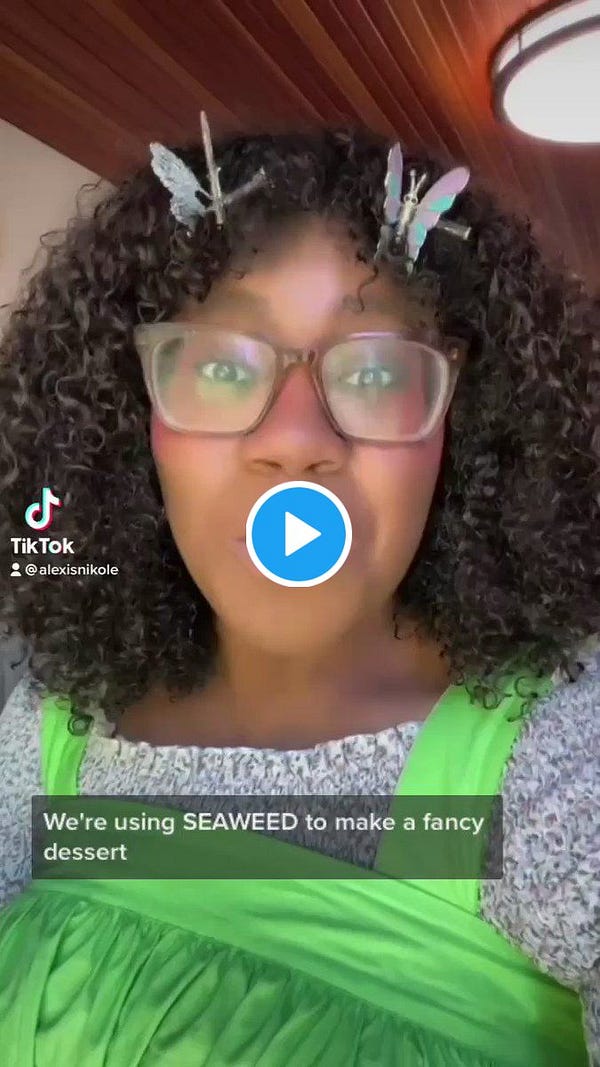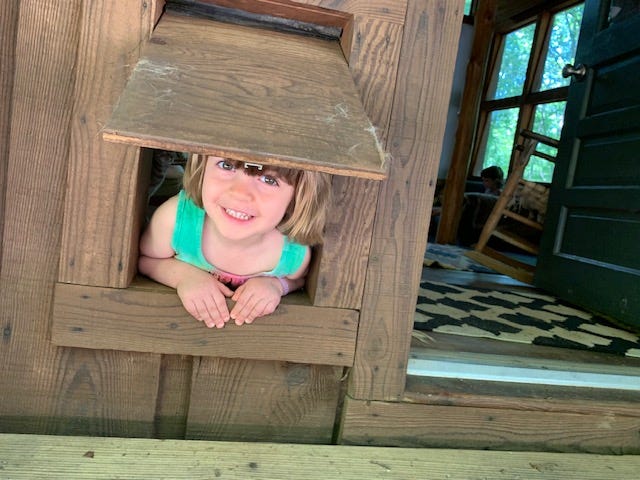(Beatrice foraging blackberries in our woods)
A couple years ago Bea had a good friend whose mom knew a lot about wild foods. Whenever Bea went to her house for a play date, the mom would text photos of foraging activities, and she’d come home with informational note cards about native plants and fruits of North Carolina. Cool! I’d text back, secretly thinking I hope it’s okay that when they hang out over here they play with Barbies while I answer emails. I’m sure it was fine, and other parents, FYI, mostly what kids do when they come over here is play independently.
Since then they’ve moved away, and I wish I’d taken the opportunity to learn from that mom. But I guess I’m a little like Bea (and most people), in that I need to learn things in my own time. Early in the pandemic, thanks to Patricia at In Good Heart Farm and her informative newsletter, I did get very into mushroom foraging, and it’s still a big enthusiasm of mine. I love mushrooms, and have been not-so-patiently waiting for this season’s chanterelles to appear. So far, I’ve only collected a handful, which we happily gave to our friend Isabel so that she could try them with scrambled eggs. She reported back this morning that they were delicious. Once we get more rain I think that we’ll have more to show you.
I love that with knowledge and care, you can take advantage of free, delicious, nutritious foods that grow in places where it’s not always easy to garden (like the steep, shady woods where we live). The best way to learn about foraging, especially mushrooms (which can be poisonous!), is from someone who already knows a lot. But books worked for us during the pandemic. If you’re interested in learning about easy-to-identify mushrooms, we recommend Mushrooming without Fear. It tells you how to identify common mushrooms of a few different types (and that do not have tricky poisonous lookalikes). I also have and recommend Mushrooms of the Southeast and Southeast Foraging.
From Ben and Patricia’s farm tour, I also learned about Alexis Nikole Nelson, AKA BlackForager, who educates people about foraging, traditional foodways, and the (racist, classist) American history of anti-foraging laws. You can read more about Nelson in this New Yorker article by Helen Rosner. Or spend the indoors, winding-down, or resting-from-swimming part of your day watching some of her funny, joyful Tiktoks, which will definitely make you want to get out there and look around—or maybe experiment in the kitchen? I think learning from Alexis Nikole Nelson would be a great way to celebrate & practice freedom. As she says in her recent Tiktok on wood ear collecting, “Happy snacking! Don’t die!”
Also, Bea and I decided that like BlackForager (whose post above you might have to open in a new window to play, but is definitely worth watching and part of her SEAWEED WEEK), we’re going to devote each upcoming week in July to a specific theme. So this week will be…. SNAKE WEEK! Look for information about snake ecology, what to do when you see them, how to identify the ones you might find on your walks and hikes.
See you Tuesday!
Do you like foraging? Any favorites? Or are you a chicken-of-the-woods? :)








That is, for sure, the cutest photo of the erstwhile dog door !
Look for the knots on the interior wainscoting , to the right of the door, where I installed the board with knots that reminded me of a dog face... ( the knots are the eyes)
i have to add that Belle’s Bea’s and Harriet’s chanterelles are gorgeous and delicious! also when Belle and Sky were little we also had dandelion flowers dipped in tempura batter and fried and they were delicious!